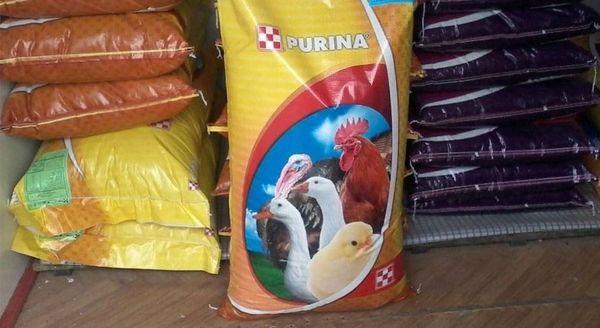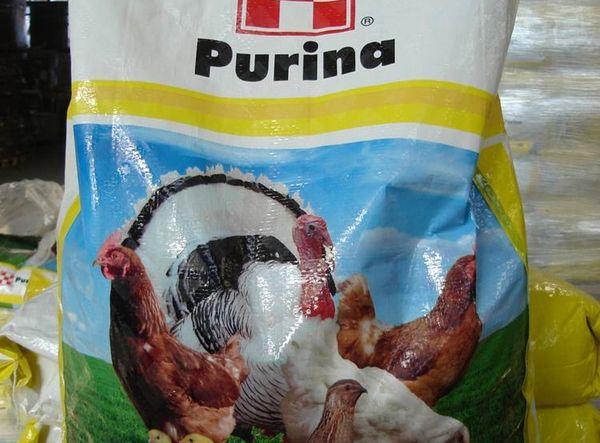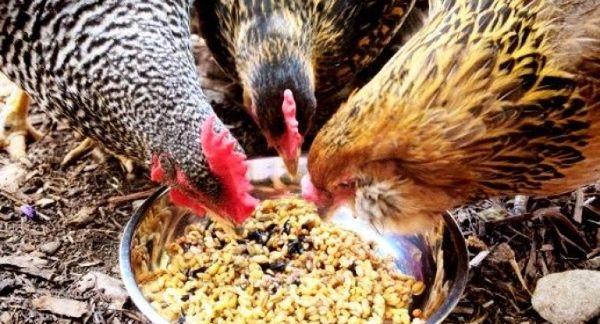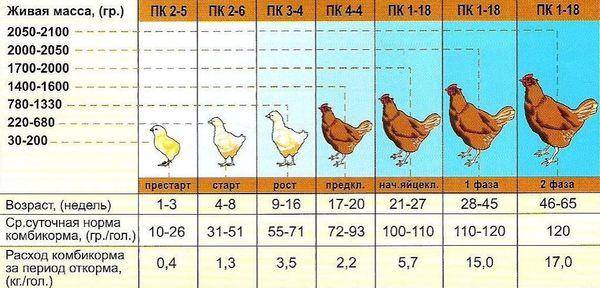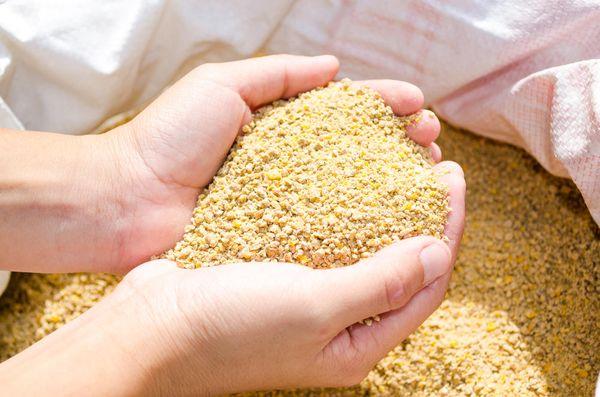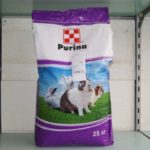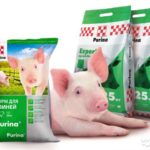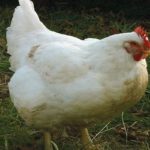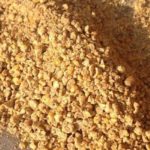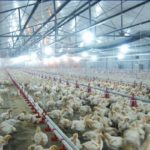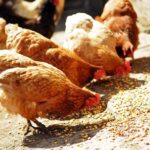Compound feed is food created by specialists for the development of health and timely muscle gain. For broilers, the Purina mixture contains vitamins and minerals that contribute to the quality growth of the chicken. The feed also contains many components that help broiler birds gain weight. Purina can be used when raising chickens in closed areas and outdoors; this will not affect the quality of absorption of nutrients.
Description and composition of Purina feed
Purina feed consists only of natural microelements that are required for the proper growth of chickens. The mixture makes it possible to balance nutrition in two methods of keeping (in a barn or outdoors). This feed is well suited for both broilers and laying hens. Purine is quickly absorbed in the animal’s body, which has a beneficial effect on the volume of muscle mass.
The food contains:
- vegetable fats;
- grain crops (corn, wheat);
- limestone flour;
- vitamins A, D3, E;
- chalk, calcium, phosphorus, amino acids;
- essential oils.
The mixture contains the correct dosage of the substance needed to improve growth. The essential oils contained in the food provide good immunity and resistance to diseases.
Release form
Compound feed for broilers Purine is produced in granular form. It is produced in bags of 10 and 25 kilograms. There are also two types of Purina food for broilers: chickens and birds older than two weeks. Chicken feed Purina Start can be given up to two weeks of age. When consuming this feed, chickens quickly grow to the size of an adult bird.
For birds older than two weeks, there is Purina Grower food. This is the mixture that poultry farmers use most often. It no longer contains substances that stimulate growth, so the chicks eat natural food, which is well digestible and provides a good amount of mass.
The composition contains many useful elements:
- corn grits;
- soybean flour;
- milled wheat;
- soybean oil;
- sunflower meal;
- kitchen salt;
- monocalcium phosphate;
- dolomite flour;
- enisms.
Microelements that are in the feed actively affect the bird’s body.It is not advisable to feed broilers with the mixture a couple of days before slaughter.
Advantages and disadvantages
The disadvantages of Purina include its high price; regular grain is much cheaper. You can also prepare your own feed.
Combined nutrition has a number of advantages for young chickens:
- immunity increases (production of antibodies to infections and diseases is formed);
- contains phosphorus and potassium, which improve metabolism and development of the skeletal system;
- good digestion of food, which is why weight gain occurs faster than with regular grain;
- gaining a healthy weight, without harming the bird;
- a complete and balanced diet, which makes keeping poultry easier (no need to provide complementary feeding);
- safety with the correct feeding pattern.
Broiler feeding schemes
Before you start feeding, you should familiarize yourself with the dosage and norms. Excessive increase or decrease in the dose of the mixture is harmful to the animal.
To speed up weight gain in broilers, you need to carefully check the composition of the mixture and the daily feeding rate.
0-14 days
To feed chickens, use 10-30 grams of feed mixture daily. Excessive feeding may cause problems with the absorption of microelements, which can affect the health of the bird. Feeding frequency – 8 times a day. During this time, the bird will gain up to 200 grams. The mixture must be given fresh each time; sour food can lead to stomach problems and slow down growth.
15-33 days
From the second to the fourth week, feed should be given at a rate of 130 grams per day. At this time, the bird begins to gain its bulk. During this period it is necessary to feed 6-7 times a day. During this period, the birds gain up to one and a half kilograms.
34-60 days
For chickens from the fifth week and older, the optimal daily norm is 150-160 grams of feed. They must be fed this dosage until slaughter. On average, the bird reaches three kilograms in weight.
If this scheme is followed, the chicken is provided with a balanced diet, in which the weight will increase without causing harm to its health.
Storage period and conditions
The shelf life of Purina for broilers is 4 months. Products that contain antioxidants have the longest shelf life.
In order for food to be stored longer, it needs certain conditions:
- mixed feed must be kept in a dry room, avoid direct sunlight;
- the premises should be free of moths, mice, rats and other pests;
- the storage area must be well ventilated;
- Products can be stored either in soft specialized containers, which are stored under a canopy, or unpackaged in bulk in floor-type warehouses.

